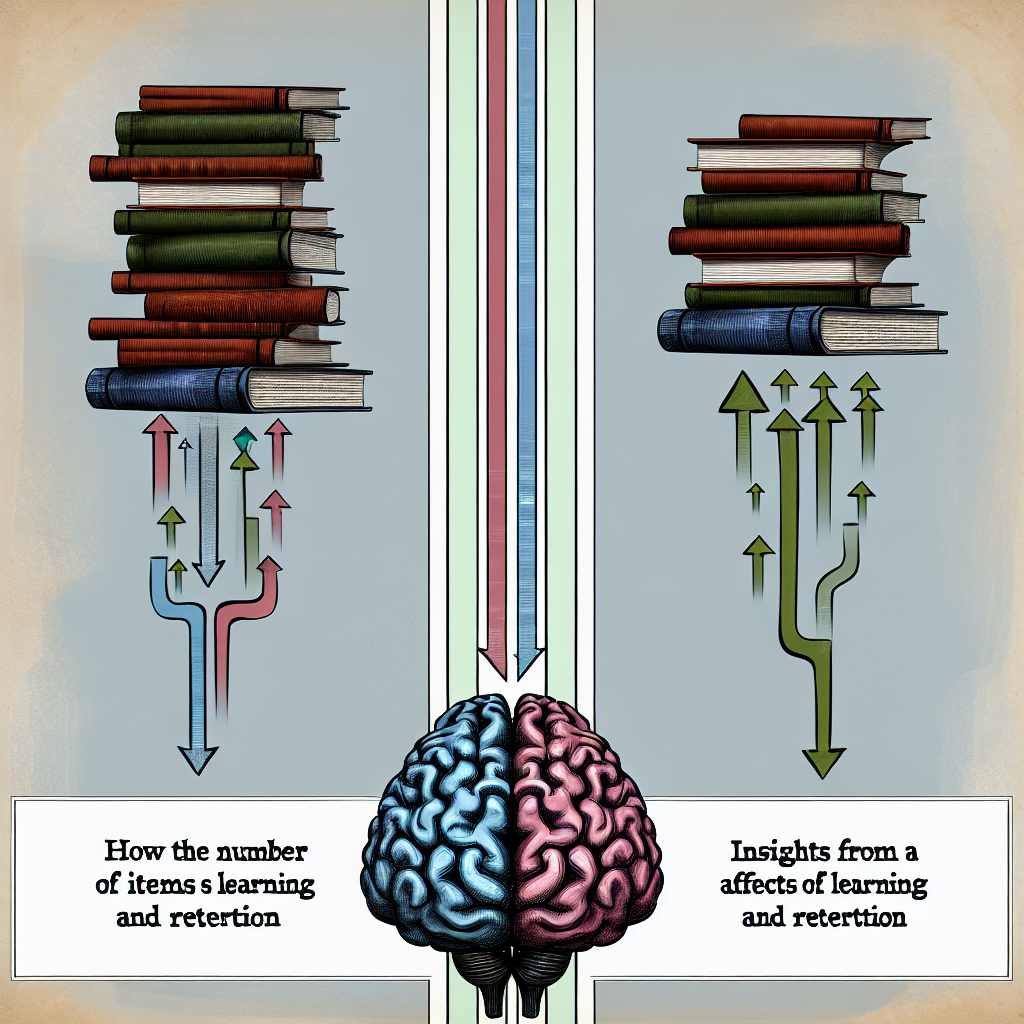How Stimulus Set Size Impacts Learning: A Breakdown of Zhi et al. (2023)
When teaching new skills, especially in applied behavior analysis (ABA), one major decision is how many items to include in an instructional set. For example, if you’re teaching a child sight words, should you introduce three new words at a time or twelve? This is more than just a matter of preference—it affects how quickly students learn, how well they retain new information, and how instructional programs are designed.
In a recent study published in Behavior Analysis in Practice, Zhi, Fienup, Greer, and Henderson (2023) take a closer look at this issue by comparing different stimulus set sizes—specifically, sets of 3, 6, and 12 stimuli. Their work aims to bring more clarity to a problem that many practitioners face but have little empirical guidance on. The study introduces a more precise way to measure learning gains using Operant Analysis (OA), rather than the more traditional “set-based” mastery approaches.
Let’s break down what they found, how they studied it, and what it means for practice.
What Is a Stimulus Set Size?
A stimulus set size is the number of items taught together during a session. In many ABA-based instructional systems (like CABAS or Precision Teaching), educators choose set sizes based on convenience, student characteristics, or past habits. But these decisions affect:
- How quickly students acquire skills
- How long they retain them
- How much time instruction takes
Until recently, researchers mostly used “set-based” mastery criteria—meaning that students had to learn all items in a set before progressing. This approach often introduces confounds, like unequal exposure of items and failure to replace already-learned items.
How This Study Was Different
Zhi et al. (2023) addressed many of the problems in earlier research by taking a more refined approach using Operant Analysis (OA). Unlike set-based criteria, OA tracks individual stimulus acquisition. If a learner masters a stimulus, it’s removed and replaced, providing more accurate feedback and keeping learning efficient.
Here’s what they did:
- Participants: Three preschoolers—two with developmental delays and one typically developing.
- Stimuli: 36 unfamiliar sight words assigned randomly into three teaching conditions.
- Conditions:
- Set-size-3 (3 sight words taught at once)
- Set-size-6
- Set-size-12
- Design: An adapted alternating treatment design was used to see which set size helped students learn fastest and retain information best.
Each word was presented in varying fonts and colors to promote generalization. The study also ran 10-day and 30-day maintenance probes to check retention.
Key Findings
The results show a clear trade-off between acquisition speed and retention:
1. Faster Learning with Smaller Sets
All three students learned new sight words the fastest when using set-size-3. This condition required the fewest:
- Instructional trials
- Teaching sessions
- Total minutes of instruction
Even after adjusting measurement to exclude already-mastered items, set-size-3 retained its lead in efficiency.
2. Better Retention with Larger Sets
When it came to long-term memory, the largest set (set-size-12) won. For instance:
- Indie retained 75% of Set-12 items at the 30-day probe.
- Nathan also scored 75% on Set-12 at Day 30.
- Kevin retained 92% by Day 10 with Set-12 items.
This suggests that while small sets help learners master skills quickly, larger sets may lead to stronger memory traces—possibly because of repeated exposure or more robust practice conditions.
Top 10 Practical Takeaways for Educators and Behavior Analysts
- Set-size-3 promotes the fastest acquisition of new skills.
- Set-size-12 supports better maintenance after instruction ends.
- Use Operant Analysis to track stimulus-by-stimulus learning instead of waiting for full-set mastery.
- Present mastered items less or remove them to avoid inflating performance.
- Use more varied stimulus presentations to support generalization.
- Design maintenance checks at regular intervals (e.g., 10 and 30 days).
- Replace mastered items promptly to keep tasks challenging and engaging.
- Consider both short-term gains and long-term retention when choosing set sizes.
- Know your learners—some may handle larger sets better than others.
- Don’t rely only on acquisition data to judge instructional effectiveness.
What This Means for Curriculum and Instruction
Educators need to think beyond just “how fast” a student is learning. While set-size-3 might help you check boxes quickly, it doesn't always lead to lasting change. That’s where set-size-12 shines. So how do you decide?
Here are three things to keep in mind:
- If your goal is quick acquisition (e.g., for a limited window of intervention), smaller sets may be best.
- If your focus is long-term retention, larger sets—and perhaps overlearning—might pay off.
- OA gives you a way to personalize instruction without the drawbacks of traditional mastery approaches.
Use data to guide decisions, and consider changing set sizes throughout a program. You might start with small sets, then add review sessions with larger sets for maintenance.
Future Research Ideas
Zhi et al. (2023) have laid the groundwork for deeper investigations in this area. Follow-up studies could explore:
- Effects of stimulus set size with academic content like math facts or letter naming.
- Impact of OA-based teaching over an entire school year.
- Differences in how neurotypical and neurodiverse students respond to these conditions.
- Use of software to automate OA and streamline data collection.
- How motivation and attention vary based on set size and exposure.
Final Thoughts
This study offers important insights for anyone making instructional decisions in ABA or special education:
- Smaller sets help students learn quickly.
- Larger sets help them remember what they learn.
- Operant Analysis offers a more accurate and flexible way to track learning.
If you’re working to improve your instructional design, it may be time to rethink how you use set sizes in teaching programs.
📘 For full details, read the original study:
Zhi, H., Fienup, D. M., Greer, R. D., & Henderson, S. S. (2023). A Comparison of Stimulus Set Sizes: Systematic Replication with Operant Analysis Acquisition Criteria. Behavior Analysis in Practice, 16, 1138–1150. https://doi.org/10.1007/s40617-023-00793-1
This research helps us move toward more personalized, effective, and data-driven instruction—benefiting both educators and learners.



